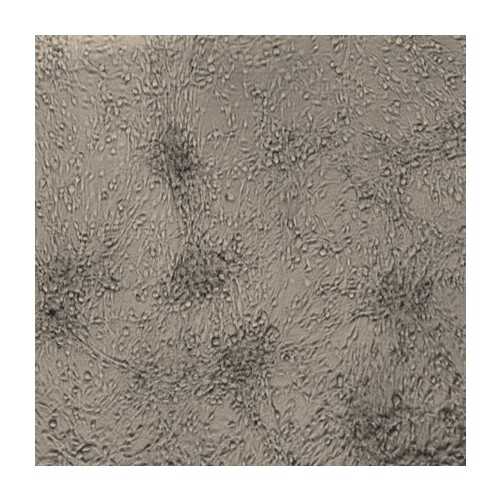Astrocyte LKB1 Knock Out Cell Line (ALKO)
Immortalized mouse astrocyte cell line (ALKO) with a stable knock out of liver kinase B1 (LKB1). Useful as a model for gliomas or for stem cell research.
Highlights:
- Exhibit anchorage independent growth with doubling time of less than 24 hr
- Express reduced levels of astrocyte marker GFAP (Glial fibrillary acidic protein)
- Express stem cell markers including Sox2 and Oct4
- Useful as a model for gliomas or for stem cell research
Liver kinase B1 (LKB1, also referred to as Serine/threonine-protein kinase STK11, Renal carcinoma antigen NY-REN-19) is a tumor suppressor serine/threonine-protein kinase that controls the activity of a large number of protein kinases including AMP-activated protein kinase (AMPK) family members, thereby playing a role in various processes such as cell metabolism, cell polarity, and apoptosis.
From the laboratory of Douglas L. Feinstein, PhD, University of Illinois at Chicago.
 Part of The Investigator's Annexe program.
Part of The Investigator's Annexe program.
Immortalized mouse astrocyte cell line (ALKO) with a stable knock out of liver kinase B1 (LKB1). Useful as a model for gliomas or for stem cell research.
Highlights:
- Exhibit anchorage independent growth with doubling time of less than 24 hr
- Express reduced levels of astrocyte marker GFAP (Glial fibrillary acidic protein)
- Express stem cell markers including Sox2 and Oct4
- Useful as a model for gliomas or for stem cell research
Liver kinase B1 (LKB1, also referred to as Serine/threonine-protein kinase STK11, Renal carcinoma antigen NY-REN-19) is a tumor suppressor serine/threonine-protein kinase that controls the activity of a large number of protein kinases including AMP-activated protein kinase (AMPK) family members, thereby playing a role in various processes such as cell metabolism, cell polarity, and apoptosis.
From the laboratory of Douglas L. Feinstein, PhD, University of Illinois at Chicago.
 Part of The Investigator's Annexe program.
Part of The Investigator's Annexe program.
This product is for sale to Nonprofit customers only. For profit customers, please Contact Us for more information.
| Product Type: | Cell Line |
| Name: | ALKO (astrocyte LKB1 knock out) |
| Cell Type: | Transformed mouse astrocyte |
| Accession ID: | Q15831, CVCL_5I28 |
| Source: | Brain |
| Organism: | Mouse (strain unknown) |
| Morphology: | Fibroblast |
| Biosafety Level: | BSL1 |
| Subculturing: | Standard trypsinization followed by 1:10 dilution |
| Growth Conditions: | DMEM 10% FCS A/A |
| Cryopreservation: | 10% DMSO in FBS |
| Storage: | Liquid nitrogen |
| Shipped: | Dry ice |
Mouse ALKO cells (astrocyte LKB1 knock out) were prepared by treating astrocytes harboring a floxed version of the LKB1 gene with Adeno Associated Virus expressing the bacterial Cre-recombinase. After several passages, the resulting cells show anchorage independent growth, have a doubling time of less than 24 hr, lose expression of the astrocyte marker GFAP (Glial fibrillary acidic protein), and gain expression of stem cell markers including Sox2 and Oct4.
If you publish research with this product, please let us know so we can cite your paper.


